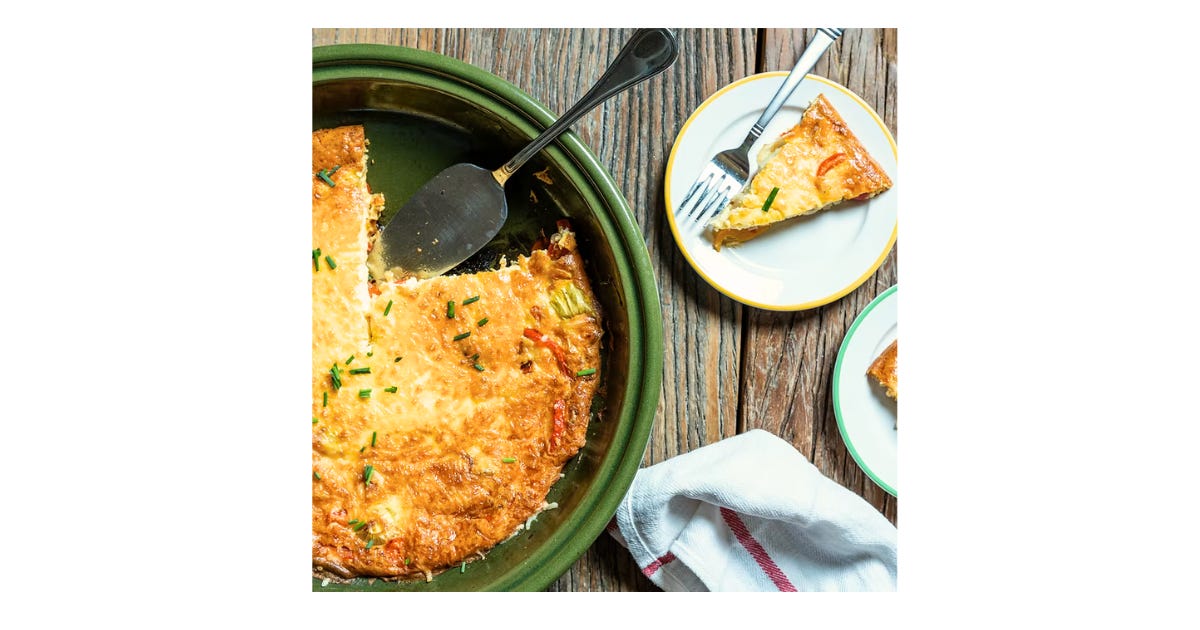Israeli-Style Savory Baked Egg Casserole in a Tagine
Israeli Recipes in Translation
This is the second post in the new series I’ll be sharing each month: Israeli Recipes in Translation.
Israeli Recipes in Translation is a monthly series that brings authentic Israeli recipes—often shared only in Hebrew—into English. Each recipe is carefully selected and translated to help bridge the gap between Israeli home kitchens and readers in the diaspora. Alongside each dish, I’ll share its cultural context, seasonal significance, or the personal story behind it. This is my way of staying connected to Israel—and inviting you to do the same, one recipe at a time.
By translating and sharing these recipes, I hope to bridge the gap—so we can all join the conversation, celebrate Israeli food culture, and bring these flavors into our own kitchens.
Each recipe will be introduced with a bit of background—what season or holiday the dish is typically eaten during, which ethnic group or groups make the dish, and sometimes, as in this case, a personal story about how the recipe came to be served at the author’s table.
As always, I’d love to hear any suggestions or feedback you have!
I discovered this recipe and was delighted to learn about the tagine—a piece of cookware that not only has unique cooking properties (it can be used both on the stovetop and in the oven) but is also a piece of art, as you can see in the colorful examples in the images below.
This Israeli-Style Savory Baked Egg Casserole in a Tagine is quite similar to a quiche, but since it has no crust, it’s much lower in carbs. The recipe comes from an Israeli blog called HaTafrit (literally, The Menu): A Home for Low-Carb Recipes, run by Adi Gvirtzman, a former designer turned mom blogger.
Israeli-Style Savory Baked Egg Casserole in a Tagine
Low Carb | Gluten Free
6–8 servings
50 minutes total (35 minutes in the oven)
A Note on the Tagine:
The tagine is a clay cooking and baking vessel that can be used both on the stovetop and in the oven. It has a flat, round base with low sides and a tall, conical lid. Its shape helps return steam to the base during cooking, keeping dishes moist and flavorful.
Traditionally used for slow-cooked meats and stews, the tagine works beautifully in this recipe—roasting the vegetables gives them a nice browning, and baking in the tagine adds a softness and depth of flavor to the finished dish. The result is particularly indulgent.
If you don’t have a tagine pot, you can absolutely make this dish in a Dutch oven, frying pan, or baking dish.
This Israeli-Style Savory Baked Egg Casserole in a Tagine is perfect for brunch, a light lunch, or a particularly delicious dinner.
Ingredients:
1–2 tablespoons butter
1 white onion, sliced into thin rounds
1 shallot, sliced into thin rounds
1 red bell pepper, sliced into thin strips
1 yellow bell pepper, sliced into thin strips
6 eggs, beaten
1¼ cups heavy cream
1½ cups + ½ cup grated yellow cheese (such as Gouda)—1½ cups for the mixture and ½ cup for the top
Spices to taste: salt, pepper, garlic powder, thyme
Instructions:
Preheat your oven to 350°F / 180°C.
Melt the butter in the tagine (or your chosen pan) and sauté the onions.
After a few minutes, add the peppers and continue cooking until the vegetables are lightly browned.
Meanwhile, in a large bowl, whisk together the eggs, cream, spices, and 1½ cups of the grated cheese.
Transfer the liquid mixture to the tagine (or combine the sautéed vegetables and liquid in a baking dish). Sprinkle with thyme and the remaining ½ cup of grated cheese.
Bake for 35–40 minutes until lightly browned and set.
If using a tagine, bake covered for the first half, then uncover for the remainder.
If using a pan, the dish can remain uncovered the entire time.
Serve hot!
Swaps
One of the things I love most about this recipe is how flexible it is. With just a few simple swaps, you can create new variations each time you make it—perfect for keeping things interesting if you want to serve it weekly.
Feel free to substitute the vegetables with zucchini, mushrooms, spinach, or roasted eggplant, and swap the Gouda for feta, mozzarella, cheddar, or a mix of your favorite melty cheeses.
Check out the Jerusalem Haroset recipe, the first recipe in our Israeli Recipes in Translation series, and let me know if there are any specific dishes or types of recipes you'd love to see from Israel.
Also, help spread the word—share the series with a friend who loves to explore new recipes and flavors!
To Our Health and Inspiration
Kenden










Check out our posts! @Gut Health Girlies
Just lovely. I have a very similar recipe - I like this one more.